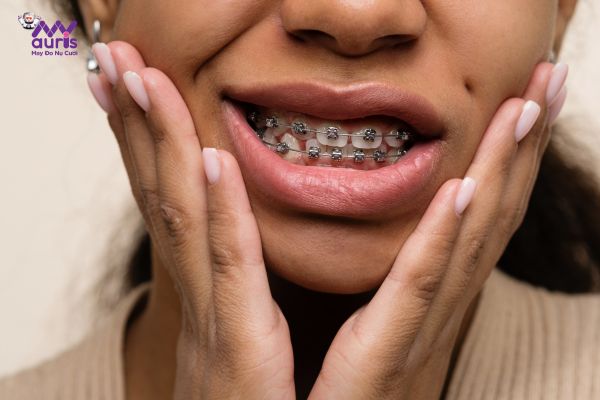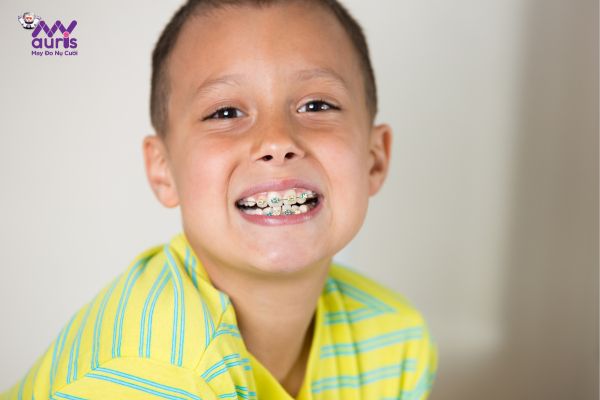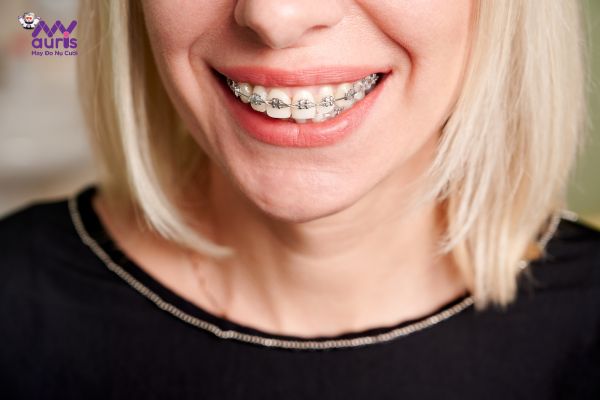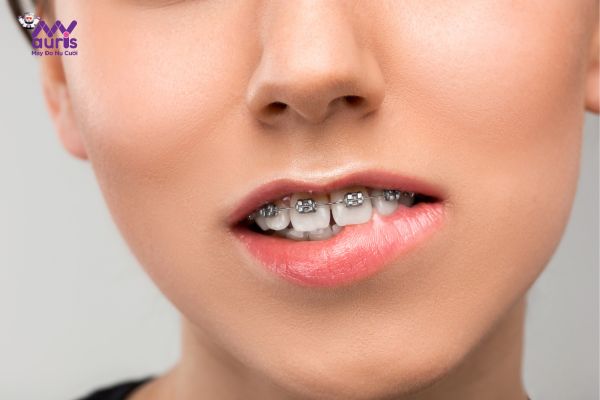Braces are a solution to adjust teeth to the correct position on the jaw to bring aesthetic beauty thanks to the force of orthodontic appliances. However, many people still wonder about this method, especially when should you get braces. To better understand the braces method as well as the appropriate orthodontic time, let’s explore the following article with My Auris.
Understand more about braces techniques
Braces is an orthodontic solution to straighten the teeth into the correct position on the jaw, correcting gaps, overbites, underbites, crooked teeth, etc. From there, the teeth are even, neat, and have a standard bite on the jaw.
To move the teeth, the doctor will use force from orthodontic appliances, which can be fixed from brackets and wires or removable from transparent braces. Braces are orthodontic devices that have been around for a long time and are increasingly improved to meet the needs and preferences of people with braces.

Before, using regular metal braces required a fixed elastic band, so it was not only aesthetically pleasing but also easily slipped off the braces. Nowadays, automatic braces have been introduced. Automatic braces are designed with an automatic opening and closing lid system that helps the arch wire slide freely on the jaw without the need for elastic bands to secure the arch. If metal braces cause loss of aesthetics, ceramic braces are made to help improve aesthetics, making it difficult for the braces to be exposed during the braces process.
When should you get braces?
When should you get braces many customers ask their doctors or friends around them. According to doctors, when to get braces depends on each person’s needs and decisions. However, the earlier braces are applied at a child’s age, it will be better and easier to do.
According to the American Orthodontic Association ADA, the most appropriate age to start braces for children is 7-9 years old. During this stage, observing parents can clearly see the growth and deviations that are gradually evident. If orthodontics is performed during this period, it will help ensure optimal effectiveness as well as limit pain.
The next stage considered the golden period for orthodontic treatment is from 12-13 years old. Because at this time, the teeth have fully grown and you can see the defects on the teeth. Furthermore, at this time the child’s jaw bone is still soft so it is easy to adjust, thereby shortening orthodontic time, making it easier to perform and saving costs.

So should people 20 years and older get braces? If you are past the golden age to get braces, can you get braces at an older age? According to orthodontists, you can still get braces at an older age, from 20-30 years old, or even 35 years old. The important thing is to have it done at a reputable, quality dentist, ensuring the dentist’s skills will still be successful and achieve good results.
However, at an older age, the teeth are strong and the jawbone is complete, so the process of moving teeth will be slower, lengthening orthodontic time and causing more pain. justify;”>Braces is the process of adjusting misaligned teeth to the correct position. Therefore, if orthodontics is performed early, it will bring many benefits:
- Align, even teeth increase aesthetics, natural smile news
- Standard teeth with physiological bite help you chew effectively results.
- Normal teeth will be easier to clean and protect oral health
- Early braces also help reduce pain and shorten orthodontic time. save costs.

Cases where early braces should be applied
If you are wonderingwhen to get braces, people should research and consider their condition. Some conditions and defects of the teeth below should be corrected early for better chewing, aesthetics and oral health protection.
Crooked, crowded teeth
Crooked, crowded teeth on the jaw are a problem.common case. Looking at the teeth, you can see that the teeth are growing in the wrong position, protruding, receding or growing on top of each other. This condition is not only aesthetically pleasing, impairs chewing, but also affects oral health due to difficulty in cleaning.
Sparse, gapped teeth
This condition is when looking at the teeth that are not close together but have gaps between the teeth. Gaping teeth will cause difficulty in chewing and eating because it is easy to get food stuck in the gaps. Besides, gapped teeth also affect pronunciation, increasing the risk of lisping.

Open bite, jaws not touching each other
Love This condition shows that the jaws cannot touch each other, causing difficulty in chewing and speaking, and also increases dental disease.
Bug teeth, buck teeth
Hooked teeth are essentially a disease of bite, the teeth on the jaw are not in the right position. This hinders the ability to eat and chew, affecting aesthetics. The characteristic of overbite is that the upper teeth protrude more than the lower jaw, leading to a rough jaw and unbalanced face.

Underbite, overbite
Underbite is a condition in which the upper jaw recedes. The lower jaw protrudes, making the face unbalanced. Similar to buck teeth, underbite teeth both cause loss of aesthetics and hinder pronunciation and chewing.
Hopefully the information in the article aboutwhen to get braces helps everyone get their own answers. To get braces successfully, everyone should go directly to a reputable, quality, and trustworthy dentist. Please contact My Auris Dental immediately for advice and to schedule an appointment as soon as possible.
Anh Thy





